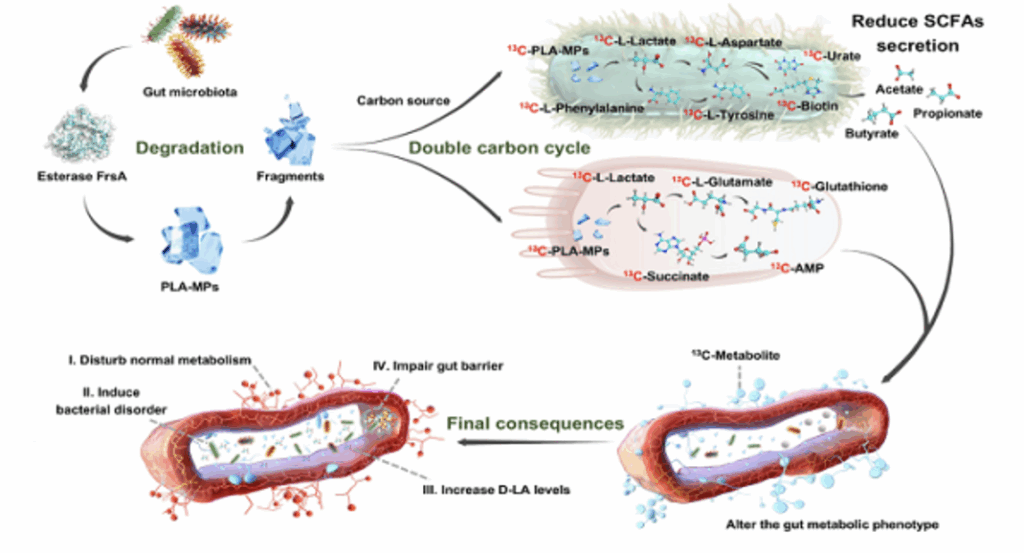https://www.pnas.org/doi/10.1073/pnas.2417104122
http://english.cas.cn/newsroom/research_news/chem/202505/t20250507_1042591.shtml
Polylactic acid (PLA) is approved by the FDA as a biodegradable package material. Although PLA has achieved large-scale applications in food packaging, its brittle characteristics make it more likely to generate microplastic particles. These particles can efficiently invade the gut through the food chain and trigger unknown biotransformation processes at the microbiota-host interface.
The research team led by Prof. CHEN Chunying from the CAS National Center for Nanoscience and Technology (NCNST) has investigated the fate of PLA microplastics in the gut of mice, particularly focusing on their microbial fermentation into endogenous metabolites and their involvement in the carbon cycle. Through spatial functional analysis, they found that the colon microbiota is the core functional unit for the degradation of PLA microplastics, through a specific esterase FrsA. Using single-strain functional validation, Helicobacter muridarum and Barnesiella intestinihominis were found to dominate the degradation process.
Combining stable 13C labeling with metabolic flux tracing, it was shown that PLA Microparticles can enter the double “carbon cycle” of gut microbiota and gut epithelium as a carbon source. Microbially, 13C-PLA microparticles are metabolized through lactate and aspartate into the purine pathway, driving uric acid synthesis. In the gut epithelium, 13C-PLA Microparticles support the synthesis of amino acids and nucleotide precursors via the succinate hub. Their entry into the gut carbon cycle triggers metabolic reprogramming, reducing short-chain fatty acid production, disrupting energy homeostasis, and reallocating carbon flux. This leads to suppressed host feeding behavior and significant weight loss.

